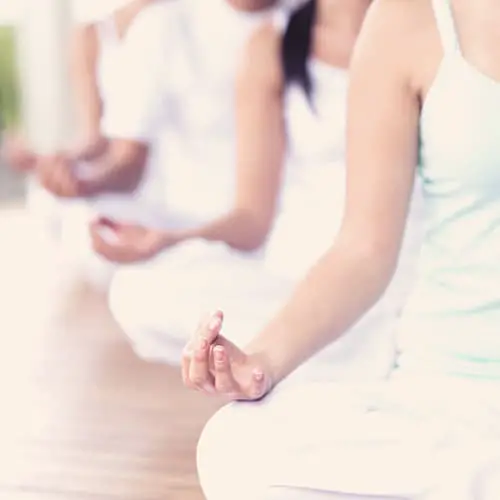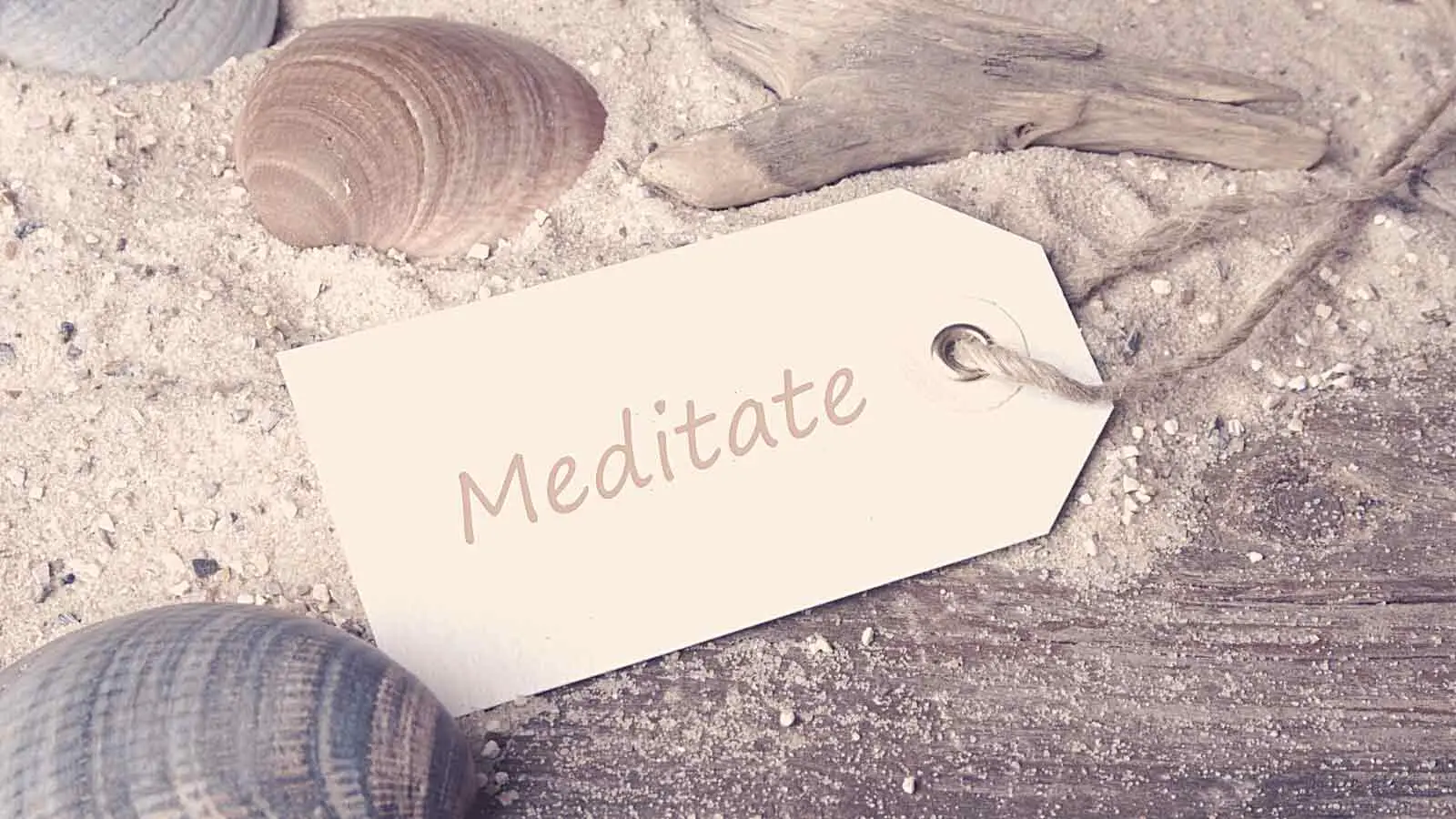Many people talk about the benefits of meditation, but fewer people know about the different forms of meditation. The truth is that there are many different types of meditation that you can experience, all requiring different skill sets and coming with slightly different benefits. In order to figure out which one is best for you, you should take the time to learn about them all and select a few you would like to try.
Many different forms of meditation can bring positive changes to your life. These include spiritual meditation, mindfulness meditation, movement meditation, focused meditation, visualization meditation, and chanting meditation, among many others. All of these require different skill sets.
If you are interested in learning more about the many forms of meditation, read on. Learning more about the different options will enlighten you as to which one would bring the best out of you and to your life. However, keep in mind that the following list is not exhaustive. There are even more types of meditation that might interest and benefit you out there.
Spiritual Meditation
Meditation is a significant part of many Eastern spiritual traditions, such as Taoism, Hinduism, and Buddhism. However, it is also practiced in many Western traditions, such as the Judeo-Christian one. There are many forms of spiritual meditation; some include silent prayer, some include spoken prayer, and some involve chanting.
Spiritual meditation can be either theistic or non-theistic. What this means is that in some cases, it can be used to foster a deeper connection with a higher power, and in others, it does not necessarily have anything to do with a higher power.
When it is practiced in a Buddhist or Taoist tradition, neither of which involves connecting to a higher power, the practice of meditation is concentrated more on self-actualization and self-awareness. Instead of trying to create a religious connection, it’s more about being the best person that you can be.
However, whether or not meditation has a religious component, it brings insights to you that can help you develop qualities that will ultimately improve yourself and your life.
There are many potential venues for your spiritual meditation practice. You can do it at home or out in nature. Some people who want a religious focus in this meditation practice will want to perform it in their preferred place of worship.
It is a good practice for individuals who are looking for spiritual growth and time for self-reflection. A good spiritual meditation practice will include elements of kindness and compassion, and it can bring you insights that can really help you be of service to yourself and others.
Mindfulness Meditation
If you have heard people talking about meditation, mindfulness meditation is likely what you heard about. This particular technique has become very popular in Western countries in recent years, and it is based on Buddhist teachings.
Mindfulness meditation can be very helpful in teaching you how your mind works. Ultimately, it can help you become more satisfied in your life, as well as fight intolerance, impatience, and many of the other barriers that can stand between you and your happiness.

If you want to develop your skills in mindfulness meditation, there are a few steps that you can follow. They include the following:
- Acknowledge your reality. It’s important to be mindful of your body and thoughts here.
- Observe your mind and thoughts. You should recognize each thought that comes up without attempting to judge or manipulate it in your mind.
- Come back to the object of focus. When you meditate, you are always going to choose an object of focus that will keep you in the present moment. For example, many people choose to focus on their breath or the movement of the air through their nostrils.
- Learn to stay in the moment. When you meditate, you learn to ignore distracting thoughts and appreciate the reality of the present moment.
In order to be as effective as possible, mindfulness meditation has to include both concentration and awareness on your part. To undertake this practice, you will need a disciplined meditation posture, the ability to keep your back straight, and a willingness to be honest with yourself when it comes to your thoughts.
Focus on Your Breath
There are many things that you can choose as the object of focus. You can choose to focus on a sensation within your muscles or an object in your surroundings. However, the best-known object of focus that people use during mindfulness meditation is the breath.
You can do mindfulness meditation in any location. Many people prefer to sit in a quiet place, but you can decide to be mindful no matter where you are or what you are doing. It is about being aware of your surroundings and activities without being overly reactive to everything that is happening around you.
One type of mindfulness meditation is Zen meditation, an ancient Buddhist tradition that involves sitting upright and following your breathing. You should focus on the way it is moving in and out of your belly, and allow your mind to simply be. Just like other types of mindfulness meditation, the purpose of this exercise is to support a sense of alertness and presence in you.
During mindfulness meditation, whenever you find your thoughts starting to drift, just notice them without judgment and bring your attention back to your object of focus. Understand that this will take some time to master because it is hard not to allow your mind to drift.
However, it is worth the effort. Mindfulness has been known to improve mental health by decreasing stress, depression, and anxiety. In addition, it helps you develop your resilience, which can make you better able to cope with difficult situations that may come up in your life.
Movement Meditation
Movement meditation is somewhat unique. Many forms of meditation will have you staying in one position, but movement meditation focuses on your moving body. One example is walking meditation. You can also meditate while you are doing other types of exercise, such as Tai Chi, other martial arts, or yoga.
If you have a commitment to some type of physical discipline, this will be a really great place to start.
Once you are capable of being present in your body during the practice of movement meditation, you will be able to expand your awareness so that you can engage in this practice during any type of physical activity. During movement meditation, the object of focus will be the movement of your body.
Movement meditation can be a very good idea for people who have a hard time sitting still for long periods. Some people also find it naturally easier to concentrate while they are moving around. You can combine this technique with mindful sitting meditation as well if you would be able to drive maximum benefits this way.
Focused Meditation
Focused meditation involves full concentration on whatever you are doing. Although you might have gotten used to multitasking in this busy world, focused meditation is actually the exact opposite. In order to truly succeed at what you are passionate about, you need to be able to focus on specific tasks at hand.
It would be best if you kept in mind that you are really only doing one thing at a time when you multitask. It can actually be quite overwhelming to jump around between various thoughts and activities, wasting time, and leading to a scattered mind.

One common type of focused meditation involves drinking a cup of tea. If you choose to practice by doing this, what you should do is stop any other type of activity. While you are drinking your tea:
- Do not check your cell phone.
- Do not think of items to add to your grocery list.
- Do not try to plan out any household chores.
Focus your attention entirely on drinking your cup of tea. You can notice different aspects of this task. These might include the sensation of warmth, the scent of the tea, the feel of the mug handle, and more. Whenever you notice your mind starting to drift, you focus back on drinking the cup of tea.
Whether you are drinking a cup of tea or doing some other task, it is important that you are focusing all of your attention on it. For example:
- If you are eating, you should focus on all of the sensations associated with eating that food.
- If you are exercising, you should notice all of your muscles’ sensations and the movements you are making.
With any type of meditation, if you see that your mind is starting to drift, you should non-judgmentally acknowledge this and bring your focus back to the task at hand. If you are committed to the practice, your ability to focus on a certain task will improve, and you might see just how rewarding it can be to be truly present in the moment when you are doing something.
Visualization Meditation
When you do visualization meditation, you should think of an image that creates a particular feeling within you. You can just close your eyes and imagine a scene that speaks to you, such as an open sky with clouds, a familiar meadow, or a beautiful lake in the mountains.

One well-known mindfulness exercise involves imagining your thoughts and emotions as being leaves on a stream. The current of the water gently moves the leaves downstream, away from you.
The purpose of this is to visualize your unwanted thoughts physically moving away from you, giving you the distance from unwelcome mental activity and allowing you to feel a sense of peace.
However, there are also visualization meditations that are specific religious practices. For example, visualization meditations that belong to the Tibetan tradition involve visualizing a particular mandala or deity. This will give the practitioner some sort of basis to cultivate desirable innate qualities, such as wisdom and compassion.
However, this type of spiritual practice can be very complex, so the practitioner should not attempt to do it without instructions from a skilled teacher and a real commitment to the practice.
Some people may think of visualization meditation as a type of escape from the world. After all, you imagine something that isn’t actually there. However, if you really think about it, a lot of what goes on in your mind throughout the day probably involves thoughts about the past or the future, both of which are not really there either.
Guided Meditation
In some cases, visualization meditation can be a guided meditation. This involves forming mental pictures that you find relaxing, but the process also involves a guide or teacher leading you.
This person will typically have the experience to conduct the session in a way that is effective for you. He or she will often invoke as many senses as possible within you, including hearing, smell, and touch. This will be an effective way to create calmness for you.
Visualization is one technique that will use the creativity within your mind to harness a positive personal transformation.
Chanting Meditation
There are many spiritual paths that involve chanting and mantra meditation. When you were chanting, your mind should be entirely focused on the melody and sound of the words that you are saying.
Mantra Meditation
In Eastern traditions, such as mantra meditation, a practitioner will use a repetitive sound, word, or phrase.
The purpose of this is to clear out the mind and allow your spiritual strength to come to the forefront. “Om” is one common sound that people use during mantra meditation.
Sometimes, there is a melody that will accompany the mantra, but this is not always the case. The subtle vibrations that are associated with your repetition of the mantra are meant to encourage positive change within yourself and help you enter an even deeper meditative state.
Transcendental Meditation
People who find chanting meditation to be helpful often say that their practice supports a state of mind that is both peaceful and alert. It helps to foster a deep awareness of oneself, as well as a stronger connection to helpful human qualities, such as confidence and compassion.
This can also be referred to as transcendental meditation. The point of this technique is to allow you to develop introspectiveness and achieve relaxation, with the ultimate goal of achieving inner peace.
If you want to engage in chanting meditation, it is quite important to find a qualified teacher to guide you through it.
Vipassana Meditation (Sayagyi U Ba Khin Tradition)

Vipassana meditation is a type of meditation that actually gave rise to mindfulness meditation. It is an ancient Indian form of meditation with the goal of seeing things as they truly are. The goal of this type of meditation is self-observation that can lead to self-transformation.
When you are engaging in vipassana meditation:
- You are supposed to pay close attention to physical sensations within your body. This will help you establish a solid connection between your mind and your body. If this interconnectedness continues on a constant basis, it will result in your mind being much more balanced and full of compassion and love.
- The objective here is to use your concentration abilities to conduct an intensive examination of your own existence. You should also have the intention of an eventual positive transformation. This practice is meant to push you to find insight into true reality by contemplating several negative aspects of human existence, such as suffering, a lack of satisfaction, and emptiness.
Typically, vipassana meditation is taught in a 10-day course for students. The students are expected to follow specific rules during the entire ten days. These rules include:
- Not taking any intoxicants
- Not stealing
- Not telling any lies
- Not engaging in sexual activity
- Not killing any living organisms
Metta Meditation (Loving-Kindness Meditation)
Metta meditation, which is also known as loving-kindness meditation, is basically the practice of extending love and kindness towards others. Practitioners of this type of meditation will recite specific words and phrases that are supposed to create warm-hearted feelings.
Aspects of this type of meditation can also be found within other types of meditation, such as vipassana and mindfulness meditation.
Typically, metta meditation is practiced while the individual is sitting in a relaxed, comfortable position. You will take a few deep breaths, and then you will repeat specific phrases in a slow, tranquil manner.

These phrases include the following:
- “May I be happy.”
- “May I be well.”
- “May I be safe.”
- “May I be peaceful and at ease.”
The purpose of vocalizing these statements is to direct loving-kindness towards yourself.
After you have expressed this kindness to yourself, you can direct the energy outwards towards others. You can picture a friend or family member, for example, and repeat the mantra once again. You can use different sets of words, or you can simply replace “I” with “you.”
However, you do not have to stop with just one other person. You can bring other people in your life to mind, including other friends, family members, and even acquaintances.
Even though it might be a challenge, you can also visualize people that you have difficulties with and wish them love and kindness as well. Truly being able to do this is actually very powerful, since it eliminates any negative hold that these people might have on your mindset.
Once you have done all of this, you can end the meditation with a universal mantra. This is “May all beings on the ground, above the ground, and below the ground, be happy.” By putting positive energy out there into the universe, you are also creating a positive state of mind for yourself that can help lead you to inner peace.
Chakra Meditation
Another type of meditation involves the chakras, which are centers of spiritual power and energy located throughout the body. “Chakra” is an ancient Sanskrit word that means “wheel” in English. The experts will tell you that there are seven chakras, each being located in a different part of your body. Each of these chakras also has a unique color that is associated with it.
This type of meditation consists of a variety of relaxation techniques. These techniques are meant to bring well-being and a sense of balance to your chakras. Some of these techniques involve actually picturing each of the chakras in your body, along with its corresponding color.
When some people practice this type of meditation, they choose to use crystals or light incense. In some cases, they might want to color code these accessories with each of the chakras in order to help them concentrate during the practice.
The goal during this meditation technique is to keep the core chakras of your body aligned, open, and fluid. If your chakras are blocked or imbalanced, this can result in negative symptoms within your body, both physical and mental.
If you are experiencing these negative symptoms, chakra meditation can be one of the ways by which you can bring them back into balance and harmony.
Qigong Meditation
Qigong meditation is a very powerful Chinese practice that has its roots in ancient times. This practice involves harnessing energy within your body by allowing your energy pathways, also known as meridians, to be open and fluid.
During this type of meditation, you can send the energy either inward or outward for positive results. If you send it inward, it is thought to be able to help your own body heal and function better. If you send the energy outward, you can send healing and positivity to someone else who may need it.
Sound Bath Meditation
This type of meditation is unique. It involves quite a bit of external stimulation. While other types involve maintaining your focus in a quiet environment or even generating your own sounds to maintain focus, sound bath meditation uses gongs, bowls, or other instruments to create sound vibrations that will benefit your meditation.

Generally, during this type of meditation, you will lie in a comfortable position on the floor. You can lie on top of a yoga mat, cushion, or set of blankets, for example. Another person, known as a sound healer, will play instruments, such as Tibetan singing bowls, gongs, didgeridoo, chimes, or other instruments.
Although you might think that you need stillness in order to relax fully, the experience of hearing these sounds can actually be quite relaxing. The sounds can take your mind away on a sort of sensory journey. In a way, it can force your mind into a meditative state when you are having trouble getting into that state on your own.
Typically, the sound bath will last approximately one hour. You might end up falling asleep or dreaming during the sound bath. Many people have found that these sound baths help them feel more grounded and can even help with different types of pain, as well as PTSD and anxiety.
Yoga Meditation
Many people would say that meditation and yoga go hand in hand. Yoga has been around since ancient times and is known to have originated in India. There are many different types and styles of yoga, but the one thing that they all have in common is a variety of postures and controlled breathing exercises.
These are meant to calm your mind and promote flexibility within your body. When you are doing different poses, you will need a lot of concentration and a good sense of balance. Practitioners are also encouraged not to focus on distractions and exercise mindfulness, staying in the moment as much as possible.
There are many types of yoga that you can consider. There are some incredibly difficult yoga poses that require an immense amount of core strength and a high level of physical fitness, but if you are not able to tackle those just yet, you can start with some easier poses. No matter your fitness level, you can find a type of yoga that is suitable for you.
In fact, mindfulness during yoga can be considered as a type of moving meditation. This is because you are focusing on your breathing and the transitions between different poses.
You will get a lot more out of both yoga and your mindfulness practice by being as mindful as possible while you are holding poses and transitioning between them. As challenging as yoga can be, it can actually be more difficult to remain in the moment and not allow yourself to be carried away by distracting thoughts while doing yoga.
Conclusion
If you are interested in making meditation part of your life, looking at different types of meditation would be a worthy exercise. You might want to start with one of them or start by trying out a few different forms. Everyone is different, so everyone will be able to derive benefits from a different set of activities.
Meditation can bring a variety of benefits to a person’s life. It can help you experience improvements in both your physical and mental health. If you find one that you can stick with, you can count on improving your life.





